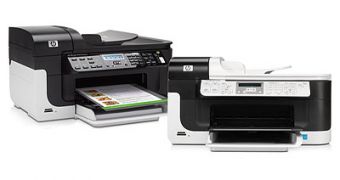Whenever a company like HP buys a company like Palm, it is obvious that the former will immediately start work on practical implementations of the bought off company's greatest assets. Palm's greatest asset, as consumers probably know, is the webOS operating system, so far used in Palm's smartphones, and is the main reason behind HP's decision to go forward with this acquisition. Now, though, it appears that said OS may end up in other devices besides slates.
Immediately after HP acquired Palm, rumors arose that the Windows 7 HP Slate had been canceled and that the PC maker was going to make another tablet, with webOS loaded onto it. However, it appears that there are more plans in store for the platform, some of which are unusual, to say the least.
In short, odd as it may sound, HP will put webOS inside printers. For any other company, such a move would not warrant the same level of urgency. HP, on the other hand, actually has a number of web-connected printers already on sale, and even an app store for them. Also considering that the HP imaging and printing division made $6.4 billion in revenue in the most recent quarter (out of a total of $30 billion), printers with an OS with greater functionality may turn out to be quite a profitable venture.
HP will buy Palm "in order to enhance our intellectual property...in the connected-mobility space. We expect to leverage WebOS into a variety of form factors, including slates and Web-connected printers." This statement was made by HP CEO Mark Hurd during a conference call with financial analysts, on Tuesday. "With a whole series of Web-connected printers, as they connect to the Web, they need an OS."
WebOS printers will be able to connect to the web and access sites like Flickr without the need for a PC. Of course, HP will still be sure to keep the inflow of webOS smartphones steady, and will eventually show off a webOS slate as well.

 14 DAY TRIAL //
14 DAY TRIAL //